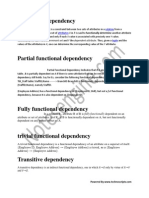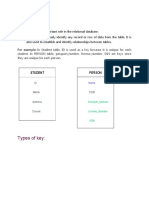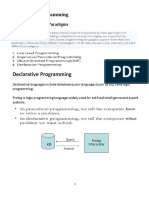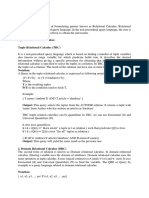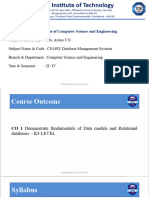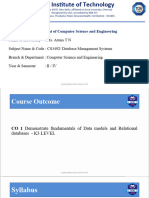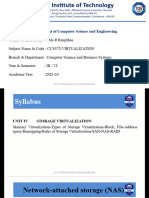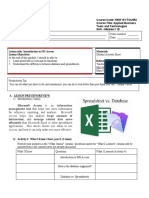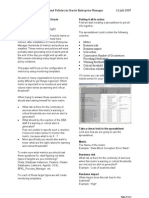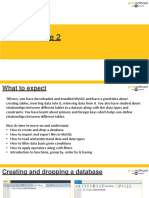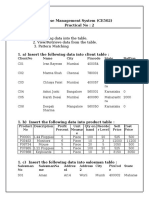KGiSL Institute of Technology
(Approved by AICTE, New Delhi; Affiliated to Anna University, Chennai)
Recognized by UGC, Accredited by NBA (IT)
365, KGiSL Campus, Thudiyalur Road, Saravanampatti, Coimbatore – 641035.
Department of Computer Science and Engineering
Name of the Faculty : Ms. Aruna T N
Subject Name & Code : CS3492/ Database Management Systems
Branch & Department : Computer Science and Engineering
Year & Semester : II / IV
CS3492/DBMS/IICSE/IVSEM/KG-KiTE
�Course Outcome
CO 1 Demonstrate fundamentals of Data models and Relational
databases - K3 LEVEL
CS3492/DBMS/IICSE/IVSEM/KG-KiTE
�Syllabus
UNIT I - RELATIONAL DATABASES
Purpose of Database System – Views of data – Data Models –
Database System Architecture – Introduction to relational databases
– Relational Model – Keys – Relational Algebra – SQL
fundamentals – Advanced SQL features – Embedded SQL–
Dynamic SQL
CS3492/DBMS/IICSE/IVSEM/KG-KiTE
� TOPIC
Embedded SQL
CS3492/DBMS/IICSE/IVSEM/KG-KiTE
� Embedded SQL
• The Programming module in which the SQL statements are embedded is
called Embedded SQL module.
• It is possible to embed SQL statements inside a variety of programming
languages such as C, C++, Java, Fortran, and PL/1,
• A language to which SQL queries are embedded is referred to as a host
language.
• EXEC SQL statement is used in the host language to identify embedded SQL
request to the preprocessor
EXEC SQL <embedded SQL statement >;
CS3492/DBMS/IICSE/IVSEM/KG-KiTE
� Embedded SQL(Cont.)
• Before executing any SQL statements, the program must first connect
to the database. This is done using:
EXEC-SQL connect to server user user-name using password;
Here, server identifies the server to which a connection is to be
established.
• Variables of the host language can be used within embedded SQL
statements. They are preceded by a colon (:) to distinguish from SQL
variables (e.g., :credit_amount )
• In some languages, like COBOL, the semicolon is replaced with END-
EXEC
• In Java embedding uses # SQL { …. };
CS3492/DBMS/IICSE/IVSEM/KG-KiTE
� Embedded SQL(Cont.)
• Variables used must be declared within DECLARE section, as illustrated below.
The syntax for declaring the variables, however, follows the usual host language
syntax.
EXEC-SQL BEGIN DECLARE SECTION;
int credit-amount ;
EXEC-SQL END DECLARE SECTION;
CS3492/DBMS/IICSE/IVSEM/KG-KiTE
� Embedded SQL(Cont.)
• To write an embedded SQL query, we use the
declare c cursor for <SQL query>
statement. The variable c is used to identify the query
• Example:
From within a host language, find the ID and name of students who
have completed more than the number of credits stored in variable
credit_amount in the host langue.
CS3492/DBMS/IICSE/IVSEM/KG-KiTE
� Embedded SQL(Cont.)
• Specify the query in SQL as follows:
EXEC SQL
declare c cursor for
select ID, name
from student
where tot_cred > :credit_amount
END_EXEC
CS3492/DBMS/IICSE/IVSEM/KG-KiTE
� Embedded SQL(Cont.)
• The open statement for our example is as follows:
EXEC SQL open c ;
• This statement causes the database system to execute the query and to save the
results within a temporary relation. The query uses the value of the host-
language variable credit-amount at the time the open statement is executed.
• The fetch statement causes the values of one tuple in the query result to be
placed on host language variables.
EXEC SQL fetch c into :si, :sn END_EXEC
CS3492/DBMS/IICSE/IVSEM/KG-KiTE
� Embedded SQL(Cont.)
• A variable called SQLSTATE in the SQL communication area (SQLCA)
gets set to '02000' to indicate no more data is available
• The close statement causes the database system to delete the temporary
relation that holds the result of the query.
EXEC SQL close c ;
Note: above details vary with language. For example, the Java
embedding defines Java iterators to step through result tuples.
CS3492/DBMS/IICSE/IVSEM/KG-KiTE
� Updates through Embedded SQL
• Embedded SQL expressions for database modification (update, insert, and delete)
• Can update tuples fetched by cursor by declaring that the cursor is for update
EXEC SQL
declare c cursor for
select *
from instructor
where dept_name = 'Music'
for update
CS3492/DBMS/IICSE/IVSEM/KG-KiTE
� Updates through Embedded SQL
• We then iterate through the tuples by performing fetch operations on the cursor
(as illustrated earlier), and after fetching each tuple we execute the following
code:
update instructor
set salary = salary + 1000
where current of c
� Dynamic SQL
• The dynamic SQL component of SQL allows programs to construct and submit
SQL queries at run time.
• In contrast, embedded SQL statements must be completely present at compile
time, they are compiled by the embedded SQL preprocessor.
• Using dynamic SQL programs can create SQL queries as strings at runtime and
can either have them executed immediately or have them prepared for sub sequent
use.























